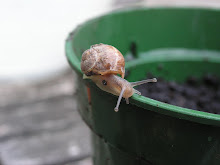Having spent 10 years transforming my garden in England, from totally overgrown to a slightly wild and jungly garden, which I loved, I was really excited about the prospect of gardening in Andalucia, when I moved here 3 years ago. Imagining a perfect warm sunny climate where all sorts of exotic plants would be really easy to grow.
Once the renovations of the farmhouse I had purchased with my partner had been completed, my thoughts turned to the garden.
The house is built on a large plot with about 60 olive trees and a separate fenced south facing area which slopes away from the house. The fenced area which I refer to as the garden, was totally overgrown and neglected. In my dreams I imagined a fabulous garden full of exotic plant species.
I was soon brought down to earth when I discovered that the climate here varies enormously. In the summer the temperature generally averages around 40c but can go up to 50c and is generally a everyday heat. Which is often accompanied by Strong winds which start without warning, sometimes lasting for only an hour, but it feels like standing in front of a giant hairdryer!
Rain is rare in the summer months, however when it does rain it is more like a monsoon. Autumn and spring are generally very mild, but the temperature can drop from 30c one day to 10c or less the next. Winter again is pretty unpredictable, at night it can drop well below freezing I've seen it as low as minus 17c, then by the middle of the day it can be warm and sunny again.
When I moved here there had been no rain for 7 months, since then I have witnessed one winter and one spring, that were so wet the local spanish people say they haven't seen so much rain in 50 years.
The challenge has been finding plants that can tolerate these extremes, having lost plants to the hot winds that literally scorch leaves, lack of water in the summer and to much at other times. The soil is mainly clay so when wet it becomes horribly claggy and if dry like concrete and impossible to dig. It has been much more difficult than I imagined, but gradually it is starting to look like a garden, in which I come to realise it is best to work with nature so am keeping it semi-wild.
I am constantly filled with awe at the way nature adapts to these extremes and constantly amazed by the plants that cope very well with little or no human intervention.
This area is covered in olive trees, which are rarely if ever given any additional water and yet year after year produce wonderful crops of olives. In the spring the area is covered in beautiful wild flowers, sometimes even in the hot dry summer months plants that look totally dead produce pretty flowers. In the garden the grapevines, pomegranate and mulberry produce masses of fruit, without being watered.
Although I am enjoying trying to transform my little patch of the Andalucian countryside, I don't think I will ever be able to compete with the way nature copes with the climate.
--------------------------------------------------------------------------------------------------------------
Sylvia's fab post and stunning photos form this blog's first guest post of 2012. However there are plenty more gardening emotions to be found hidden amongst my guest bed. Click here to discover the true feelings of other gardeners...
If you're interested in baring your emotional garden soul then feel free to get in touch Thehaplessgardener@gmail.com or @haplessgardener on Twitter







No comments:
Post a Comment